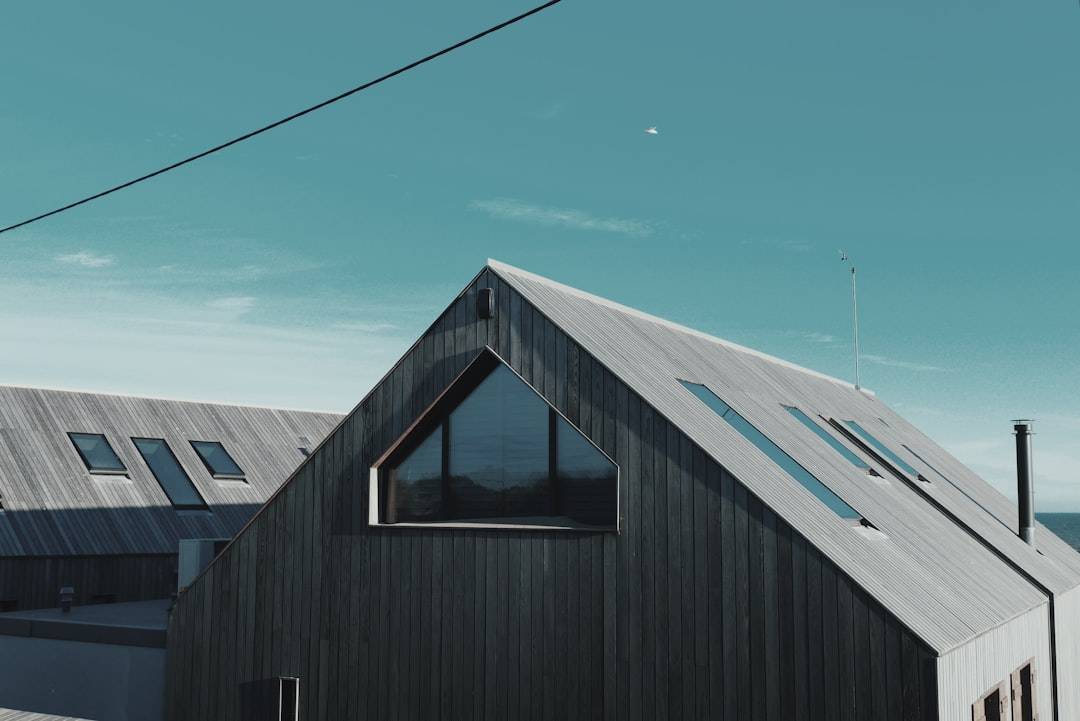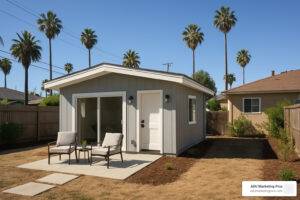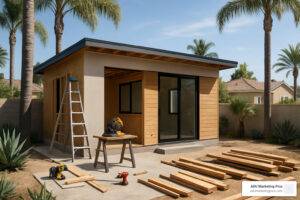Why ADU Conversion Tips Matter for Your Project
ADU conversion tips can transform your unused garage or empty backyard into valuable living space, boost your property value, and even earn rental income. Here are the key tips you’ll need:
- Assess Your Space: Check structural integrity, foundation, and local regulations.
- Research Permitting: Understand local zoning and secure necessary permits.
- Design for Functionality: Use space efficiently, add natural light, and plan smart storage.
- Budget Wisely: Plan your finances carefully, account for hidden costs, and explore funding options.
- Hire Pros: Select experienced ADU experts to ensure quality and compliance.
Investing in Accessory Dwelling Units (ADUs)—also known as granny flats, garage apartments, or backyard homes—is increasingly popular, especially in areas like California. With housing prices soaring, homeowners and communities are looking for creative solutions to add living spaces without breaking the bank.
Here’s a quick perspective from a homeowner who converted their garage into an ADU:
“That can’t be my garage!”
—A common reaction after a successful ADU conversion.
Yet, starting such a project can feel daunting. Where do you begin? How do you steer zoning laws, permitting headaches, and design challenges? And can an ADU really pay off?
Let’s explore the top ADU conversion tips you need for a smooth, profitable change.

Understanding ADU Conversions
Before you jump into the exciting world of ADU conversion tips, it’s helpful to clearly understand what an ADU is and what it really involves.
An Accessory Dwelling Unit (ADU) is essentially a smaller, secondary home built on a single-family residential lot. Think of it as a cozy backyard cottage, a converted garage apartment, or even an extra unit integrated within your existing home. These versatile spaces can meet a wide range of needs—from providing comfortable living quarters for family members, to creating an excellent source of rental income.
ADUs come in several forms, each with its own unique advantages and considerations:
-
Attached ADU: These units share at least one wall with your main house. They’re fantastic for homeowners looking to maximize their current structure without sacrificing yard space. Typically, attached ADUs cost around $50,000 to $150,000.
-
Detached ADU: Completely separate structures placed on your property, detached ADUs offer maximum privacy. They’re ideal for rental units or independent living arrangements. They usually run between $100,000 and $250,000.
-
Garage Conversion: By changing your existing garage into livable space, you can often keep your costs lower ($30,000-$100,000). These conversions are a practical choice, leveraging structures that are already in place.
-
Junior ADU (JADU): These compact units (under 500 sq ft) are built within your existing house. Perfect for budget-conscious homeowners, JADUs typically cost $20,000 to $60,000.
Here’s a handy table comparing these different types of ADUs at a glance:
| ADU Type | Description | Best For | Typical Cost Range |
|---|---|---|---|
| Attached ADU | Connected to the main house | Maximizing existing structure | $50,000–$150,000 |
| Detached ADU | Separate structure on property | Maximum privacy | $100,000–$250,000 |
| Garage Conversion | Transforms existing garage | Cost-effective solution | $30,000–$100,000 |
| Junior ADU (JADU) | Small unit (≤500 sq ft) within main house | Budget-conscious homeowners | $20,000–$60,000 |
Among these options, garage conversions have become particularly popular lately. The reason? They often provide the quickest turnaround and easiest permits, since you’re primarily working with existing structures. Plus, they tend to be more budget-friendly. Here’s what homeowner Dan Gold shared after converting his garage into an ADU:
“I provided $48,000 in savings by managing the project myself compared to hiring a full-service contractor. But if it’s not your aptitude, don’t take it on.”
Speaking of permits and zoning—these legal considerations are crucial to your ADU project. In California, for instance, recent legislation has simplified ADU construction significantly. Cities like Los Angeles, San Diego, and San Francisco’s Bay Area (including San Jose, Sunnyvale, Palo Alto, Mountain View, and Menlo Park) have seen a boom in garage conversions due to these relaxed regulations. Still, verify local zoning guidelines, permitting requirements, and building codes before you start construction.
Feeling unsure about zoning and permitting? We’ve got you covered. Check out this helpful external link for detailed info on navigating this critical process: Understanding zoning and permitting for ADUs.
Understanding the basics of ADUs sets you up for a smoother, stress-free conversion journey. And now that we’ve covered the essentials, let’s dive into specific ADU conversion tips that will guide you every step of the way.
Top ADU Conversion Tips
Thinking about turning your garage, backyard, or spare space into a cozy and functional ADU? You’re not alone! ADU conversions are booming, especially here in California. But to make your project successful, compliant, and valuable long-term, you’ll need some expert guidance.
Let’s explore the most important ADU conversion tips you should follow to turn your extra space into a beautiful, livable unit that adds real value to your home and your life.
ADU Conversion Tip #1: Assess the Feasibility of Your Space

Before diving headfirst into designs and dreams, step one is checking if your existing structure suits an ADU conversion. This is especially important when converting garages—one of the most popular and budget-friendly options.
One homeowner in Portland learned this the hard way. “We found out our old garage didn’t actually have a proper foundation—just a thin slab,” he shared. “Strengthening it added around $10,000 we didn’t initially plan for.”
To avoid surprise costs, you’ll want to carefully evaluate a few key structural elements:
Foundation integrity is vital. Older garages (especially pre-1930) often have inadequate foundations that won’t meet modern codes. Expect foundations for ADUs to run around 18″-24″ below grade, especially in colder regions.
Water intrusion can signal bigger structural issues. Pay attention to signs of leaks or moisture damage.
Roof condition matters too. Your garage roof might need reinforcing or replacing to meet residential building codes.
Wall framing must be sturdy enough to support insulation and residential loads.
Because these checks involve specialized knowledge, it’s smart to call in a structural engineer or experienced contractor. Bringing in professionals early can save headaches—and thousands—in the long-run.
Wondering if your garage is an ideal candidate? Structures already legally permitted, with solid foundations, accessible outdoor space, and good driveway layouts typically make for the most cost-effective conversions.
Even if your garage needs extra TLC, it’s often still cheaper than building an ADU from scratch. As RenoFi notes, “ADU conversion is a practical and increasingly popular housing solution.”
ADU Conversion Tip #2: Steer Zoning and Permitting Requirements
Navigating permits and zoning laws can feel like swimming in paperwork. But it’s essential—the right permits ensure your ADU meets local regulations and avoids costly delays.
Thankfully, California has recently relaxed many restrictions to ease ADU development, but each city still has unique requirements. Here are key permitting considerations to watch out for:
Zoning regulations determine whether your property is eligible for an ADU conversion. Always double-check your local zoning rules first.
Setback requirements usually mean your structure has to be a specific distance from property lines. However, garage conversions often have special exceptions, allowing you to keep the original footprint even if it’s close to the property line.
Parking regulations can vary widely. Fortunately, many California cities no longer require extra parking spaces for garage-to-ADU conversions.
Utility easements need special attention if your garage sits near power lines or utility corridors. You may need additional permits or must carefully maintain distance.
Stephen LaChance, a homeowner who converted his garage in California, shared his best advice: “Spend time at your city’s development office before you start planning. Those hours saved me from costly mistakes down the road.”
To streamline permits, you might explore pre-approved plans offered in some cities, meet early with city planners, and consult professionals familiar with local rules. This upfront planning can reduce approval times significantly.
Remember to budget extra time for permits—usually 2-4 months on average across California. Even streamlined cities like Los Angeles can take 60-90 days. Building in time buffers helps keep your project stress-free.
Learn more about Understanding zoning and permitting for ADUs.
ADU Conversion Tip #3: Design with Functionality in Mind

Good design is at the heart of every successful ADU. Most converted spaces measure between 300 and 600 square feet, so every inch counts!
Start with an open floor plan to create spaciousness. Removing unnecessary walls can dramatically increase livability. One Bay Area homeowner boosted their 400-square-foot garage space by adding a loft, increasing usable area by nearly 90 square feet.
Make your small space feel bigger by incorporating ample natural lighting. Skylights, clerestory windows, French doors, or glass sliders can transform a cramped garage into a welcoming home.
Use multifunctional elements like Murphy beds, built-in storage, under-stair shelving, and compact washer/dryer combos. Also, connect indoor and outdoor spaces creatively by converting driveways or side areas into relaxing patios or decks.
Smart layouts matter too. Positioning kitchens and bathrooms side-by-side can substantially reduce plumbing expenses—a pro tip from seasoned contractors. Also, consider airflow, traffic flow, and window placement carefully to make the most out of your layout.
Don’t be afraid to think creatively. A retired couple in Southern California turned their cluttered garage into a sunny 600-square-foot rental unit with solar panels, now earning $1,200 monthly. Another Los Angeles homeowner transformed their garage opening into a beautiful windowed living area, completely changing the feel of their ADU.
For more inspiration, check out more info about ADU design trends.
ADU Conversion Tip #4: Plan Your Budget and Explore Financing Options
Budget realities can be tough to face, but careful planning ensures your project stays affordable and profitable.
Garage conversions typically range from about $30,000 (simple remodel) to $150,000 (luxury finishes). Costs vary widely due to foundation needs, plumbing and electrical setups, windows, kitchen finishes, HVAC systems, and permits.
Sarah, a homeowner in Los Angeles, spent roughly $52,000 converting her 400-square-foot garage and now earns $1,500 per month renting it out. Another homeowner noted savings of nearly $48,000 by managing the project himself—but cautions it’s only wise if you’re comfortable managing construction.
Explore financing options like cash-out refinancing, home equity lines of credit (HELOC), construction loans, or local ADU-specific lending programs. RenoFi even highlights financing based on the ADU’s projected post-renovation value as a helpful option.
No matter your approach, always build a 10-20% contingency fund into your budget. Prioritize structural quality, utilities, and essential features over lavish finishes. Consider phasing your build if working within tight financial constraints.
For a deeper dive into budgeting, explore more info about ADU financing options.
ADU Conversion Tip #5: Hire Qualified Professionals

Even if you’re hands-on, working with experienced professionals makes the difference between a stressful experience and a smooth, valuable conversion. Your ADU dream team typically includes architects/designers, contractors, structural engineers, plumbers, electricians, and sometimes even permit expediters.
When choosing professionals, check their credentials carefully. Review portfolios specifically for ADU experience, seek detailed client references, and ensure clear, responsive communication.
Avoid red flags like contractors unwilling to provide references, those offering suspiciously low bids, or professionals reluctant to secure necessary permits.
As one San Diego homeowner advised: “Interview multiple contractors until you find someone who truly understands garage conversions. It makes all the difference.”
Clearly outline your expectations—budget, timeline, communication style—and get everything in writing. Regular progress meetings and a detailed scope of work can keep everyone on track.
At ADU Marketing Pros, we’ve seen the best results when homeowners partner with professionals specialized in ADUs. Their expertise helps avoid costly mistakes and delivers maximum return on your investment.
Your ADU dreams are closer than you think—just keep these ADU conversion tips handy, and you’ll soon be enjoying your beautifully-converted new living space!
Frequently Asked Questions about ADU Conversion Tips
How much does an ADU conversion typically cost?
When homeowners first start exploring ADU conversion tips, cost is often their number one question—and for good reason! ADU conversions in California can vary widely, depending on location, the type of conversion, and project complexity.
For instance, if you’re located in the San Francisco Bay Area, prices typically start around $150,000 due to high regional costs. Meanwhile, in Southern California cities like Los Angeles or San Diego, your starting budget might hover closer to $130,000.
If you’re considering a garage conversion, you’ll find a broad spectrum of costs—from about $20,000 to $50,000 if you’re rolling up your sleeves and tackling a DIY project. But let’s be honest: DIY isn’t for everyone. Most homeowners prefer hiring professionals, with costs typically ranging from $40,000 to $75,000 for basic finishes. If you’re planning structural changes, your budget could move toward the $80,000 to $120,000 range. And for those dreaming of premium finishes and high-end materials, expect to invest around $120,000 to $200,000.
Some specific factors influencing your final price include the condition of your foundation (expect $10,000 to $30,000 if it needs reinforcement), how easily you can connect utilities ($5,000 to $20,000 if separate meters are required), permitting fees ($2,000 to $7,000 depending on your city), and your chosen interior finishes ($5,000 to $25,000).
Here’s a real-life example: a Los Angeles homeowner transformed a detached 400-square-foot garage into a cozy ADU for roughly $70,000. Now, they enjoy a monthly rental income of $1,500.
Another homeowner in San Jose handled his own project management, converting a roughly 480-square-foot garage built in 1996 for about $52,000, saving himself an estimated $48,000 compared to hiring a general contractor.
Bottom line? For most homeowners working with professionals in areas like San Jose, Sunnyvale, or Mountain View, planning for an initial budget between $90,000 and $150,000 is a safe starting point. Of course, every project is unique, so always build in a comfortable buffer for unexpected costs.
What is the typical timeline for completing an ADU conversion?
The road to your beautifully converted ADU usually takes about 3 to 9 months from start to finish, but many factors can shorten or lengthen this timeline.
Initially, planning and design might take around 4-6 weeks. This includes assessing your structure, working through design sketches, and setting your budget. Next comes permitting, which can often be the most unpredictable stage. Depending on your city and project complexity, anticipate about 2-4 months here.
The most exciting phase (and perhaps the loudest!) is actual construction, typically lasting anywhere from 3-6 months. Demolition usually occurs quickly, within 1-2 weeks, followed by structural and framing work taking another 2-4 weeks. Electrical and plumbing rough-ins typically add 2-3 weeks, with insulation and drywall installation taking another several weeks. The final finishes—flooring, cabinetry, painting, and fixtures—might require around 4-6 weeks, and inspections add another 1-2 weeks to wrap things up.
Numerous factors can shift your timeline. Permitting delays are the biggest wildcards, especially in cities with stringent regulations or backlogged planning departments. Surprises during construction—such as finding structural issues—can add weeks to your schedule. Supply chain disruptions affecting material deliveries and even unexpected weather conditions may also slow things down considerably.
For perspective, a San Diego homeowner completed their straightforward garage conversion in just 8 weeks because the structure was already in great shape. But another homeowner in Palo Alto faced a 14-month timeline due to extensive permit reviews and foundation reinforcements.
A seasoned ADU contractor once wisely said: “Construction timelines for garage conversions can sometimes be as short as 8 weeks, but that’s more the exception than the rule. For most projects, plan realistically for about 6-9 months.”
Here’s our favorite ADU conversion tip: always build in a timeline cushion of 2-3 months for unexpected delays. You’ll thank yourself later!
Can I keep my garage and have an ADU?
Absolutely! It’s a question we hear a lot, and the great news is that you don’t necessarily have to choose between having an ADU and keeping your garage.
One popular solution is partially converting your existing garage. If you have a two-car garage, you might convert one bay into a comfortable, livable ADU space and leave the other bay for parking or storage. It’s a clever compromise that homeowners in areas like Los Angeles and San Jose often choose.
Another appealing (though more expensive) route is adding an ADU above your existing garage. This approach has gained popularity, especially in urban areas with limited yard space. Homeowners in cities like Mountain View find this ideal, as they maintain their valuable garage parking while gaining an additional living space above. However, that building upward does increase the project’s complexity and budget. The typical cost for an over-garage ADU ranges from $200,000 to $350,000, compared to around $50,000 to $100,000 for a simpler conversion.
A homeowner in Mountain View shared their experience: “We opted for a second-story ADU above our two-car garage. It cost us around $350,000—definitely more than a straight conversion—but keeping our garage was worth it to us.”
If space allows, another creative solution is converting your entire garage into an ADU and then adding a carport, driveway parking, or even building a new garage elsewhere on your property to replace it.
There are a few important considerations with these creative solutions. Building above an existing garage may require significant structural reinforcement, separate access points, stairs, and adherence to local zoning rules concerning height and setbacks. If you retain garage space below a living area, you’ll also need added soundproofing measures.
One contractor from Sunnyvale shared a budget-friendly ADU conversion tip: “Build directly above the existing garage footprint to minimize structural modifications—this helps save construction costs significantly.”
Lastly, some homeowners get innovative, combining functions—such as using flexible interior spaces or installing garage-style doors that open occasionally for parking but serve as living space otherwise.
Before choosing your route, always consult with ADU-savvy professionals familiar with your local regulations and costs. They’ll help find the perfect balance between your budget, your lifestyle, and your property’s potential.
Conclusion

Converting your unused garage or empty backyard into a cozy, functional ADU is one of the smartest home investments you can make. As we’ve explored, successful ADU conversions take careful planning, professional guidance, and attention to the details that matter most. But when done right, the benefits are remarkable.
Throughout this guide, we’ve covered the key ADU conversion tips you’ll need to ensure a smooth and rewarding process. First, it all begins with a thorough evaluation of your space. Understanding the structure you’re working with ensures you start your project on solid footing—literally!
Next, mastering zoning and permitting requirements early saves headaches later on. Every city has its own rules, and navigating these can feel overwhelming. But with knowledgeable professionals by your side and resources like our guide on Understanding zoning and permitting for ADUs, you’ll steer through smoothly.
Designing your space thoughtfully is essential, making the most of every precious square foot. By incorporating smart layouts, natural light, and clever storage solutions, your ADU can feel larger than its actual size. For inspiration, check out some current ADU design trends to spark your creativity.
Budgeting realistically and exploring financing options is another key to success. Unexpected issues can—and often do—arise during any construction project. So, building a little cushion into your budget helps you handle surprises without stress. Learning more about ADU financing options can also open doors to affordable and practical ways to fund your project.
Finally, partnering with qualified professionals makes all the difference. Architects, contractors, and specialists who focus specifically on ADUs understand the unique challenges you’re facing. They’ll ensure your conversion meets regulatory requirements, stays within budget, and achieves your vision beautifully.
The ADU boom across California continues to thrive, and it’s easy to see why. With soaring housing costs in Los Angeles, San Diego, and the San Francisco Bay Area, homeowners are turning to ADUs for practical solutions. A well-executed garage conversion can boost your home’s value by 20-30% and potentially earn you $1,500 to $3,500 every month in rental income, depending on your location and conversion style.
Even if renting isn’t your goal, your new ADU provides endless flexibility. Whether you need space for aging parents, returning kids, out-of-town guests, or even a peaceful home office, your ADU will be ready to adapt.
One homeowner in San Jose summed it up nicely: “The process had its share of problems, but watching our old garage transform into beautiful living space—and knowing it generates income—has absolutely made it worth every step.”
At ADU Marketing Pros, we’ve had the pleasure of witnessing numerous successful garage conversions across California. Each one faces its unique challenges, but the outcomes consistently inspire us.
If you’re just starting your ADU journey or you’re ready to dive into your project, remember these essential ADU conversion tips. With careful planning and expert guidance, you’ll soon transform your home into something truly special.
Ready to take the next step? If you’re an ADU builder, architect, or professional looking for targeted marketing solutions, learn how ADU Marketing Pros can help you stand out. Visit our ADU marketing services page to see how we’re helping ADU professionals grow their businesses across California.





